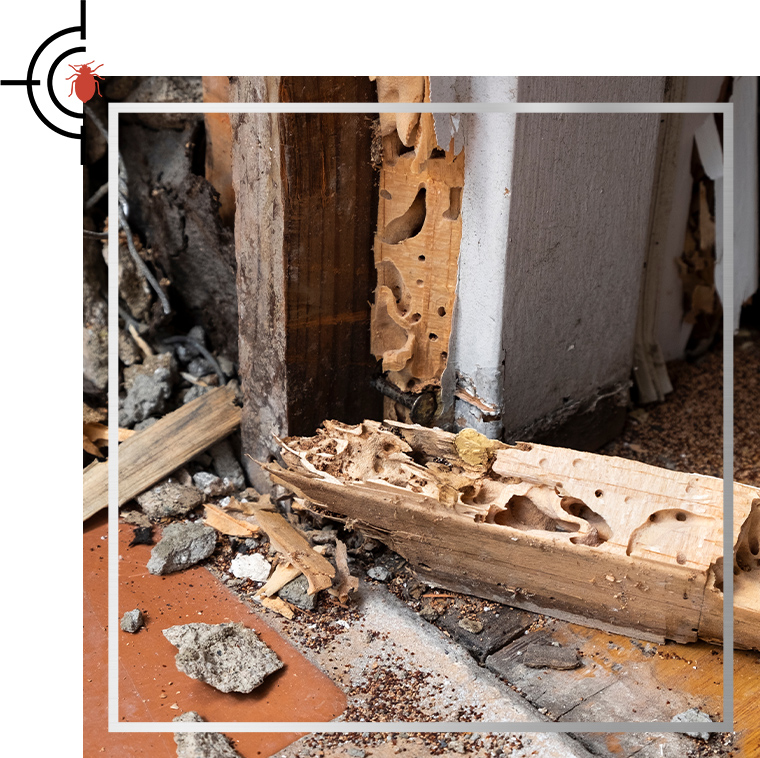
Termites Information & Biology
LEARN MORE ABOUT TERMITES
Subterranean termites are among the most destructive pests, causing significant damage to wooden structures. They thrive in colonies underground, making them difficult to detect until the damage is done. Knowing their biology and behavior is crucial for effective control and prevention.
What are Subterranean Termites?
The termites in our area of the country are classified as subterranean termites. This means this particular species of termite requires contact with soil (other species around the world may not). Subterranean termites can be found in every state in the United States (even a few times in Alaska). Subterranean termites used to be called “white ants” because of their fair color and similar size to ants but termites are more closely related to cockroaches than they are to ants.
Subterranean termites have a caste (or “class” system essentially) where nymphs (immature young) can develop into a Worker (most common), a Soldier, or a Reproductive (king / queen). Colony size can be anywhere from a few thousand to a few million. Every full acre in the Northeast is home to 1 to 3 colonies of subterranean termites. Termites can be found under warm rocks, in tree stumps, fallen branches, wood piles, etc.

Frequently Asked Questions
Still have questions or can't find the answer you need? Give us a call at 877-665-2667 today!
-
What do termites eat?Termites eat cellulose, the basic building block of wood. termites will also eat other cellulose materials such as books, sheetrock paper, picture frames.
-
How can I prevent moisture around my home?Ensure proper drainage and fix any leaks to reduce moisture, as termites thrive in damp environments.
-
What does damaged wood look like?
Termites often leave wood that sounds hollow when tapped. Look for small holes or frass, which is termite droppings, as signs of damage.
-
Does homeowners insurance cover termite damage?Most homeowners insurance policies do not cover termite damage.
-
What treatments are available for termites?There are various treatments, including liquid termiticides, bait systems, and fumigation. A pest control expert can recommend the best option for your situation.
Worker Termites
The worker termite performs vital tasks for the colony including building and maintaining the nest, gathering food and feeding the other caste members. They can be male or female and are blind, wingless, and sterile.
Soldier Termites
Similar to worker termites the soldier termite can be male or female and are blind, sterile, and wingless. Their main role is to defend the colony with the help of their large and powerful jaws.
Reproductive Termites
There are different types of reproductive termites within the caste. The "Allates" also known as "Swarmers" leave the nest to mate and colonize. Once colonized they will become kings or queens responsible for egg production. There are also reproductive termites known as "Neotenic" that help the queen lay her eggs and can step up and replace the queen if she dies. Reproductive termites have wings and the ability to see.
Termites are always in search of new food and they will explore underground or in some cases they will build “mud tubes” to bridge the gap from soil to food. The termites will travel up and down inside these tubes, consuming the cellulose (the binding sugars in wood products) and returning to the underground colony to feed the rest of their nest mates. Termites do not die in the winter, they simply move further down in the warm ground. Subterranean termites will send out “swarmers” or small, black, winged reproductives in early spring (April to early June usually). These swarmers are often mistaken for flying ants but these insects break their little clear wings off and crawl around on the floor or ground.
Protect Your Home
Don't let subterranean termites compromise your home. With our expert services, you can ensure your property remains safe and sound. Reach out to Pest Assassins today for a consultation.






